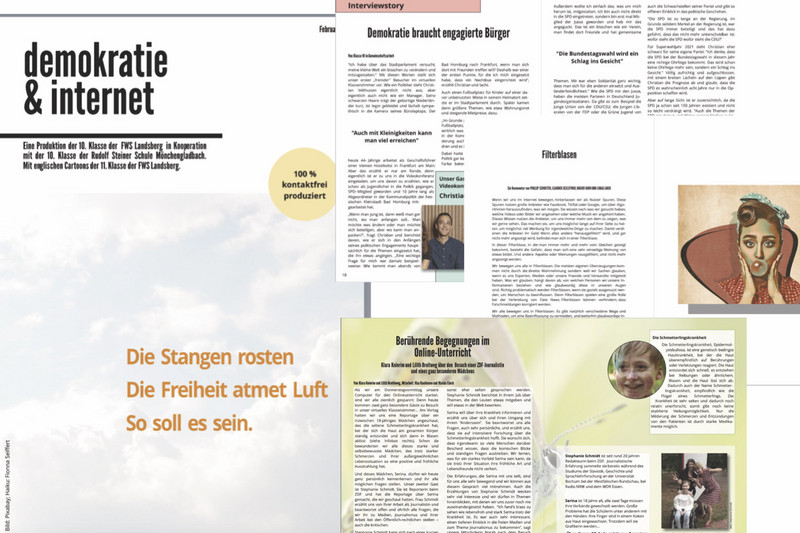Well-connected: “Democracy and the Internet” Media Education Project

The coronavirus crisis has been presenting schools with new challenges for more than a year as it is not easy to transfer well-established teaching structures to remote teaching. This process has often led to the replacement of personal encounters by video conferences, with some finding it easier and others harder to actively involve everyone. A teacher in Landsberg, Karoline Kopp, has developed a particularly creative solution: Based on a concept by the media educator and Waldorf teacher Franz Glaw, she developed a varied and practically oriented programme for her Year 11 class to study “Democracy and the Internet”.
For instance, she took advantage of video conferencing in the classroom to invite experts from politics and journalism to her virtual classroom. Instead of the traditional lesson book, the students created a newspaper at the end of the project, with a grant from the SAGST covering the printing costs. Other classes in Landsberg also contributed content to this publication, such as cartoons from the English class or an article on the social media platform TikTok from media studies. Furthermore, the students collaborated with the Year 11 class at the Rudolf Steiner School in Mönchengladbach, where Franz Glaw teaches. Among other things, several podcasts on the topic, which were integrated into the newspaper via QR codes, were created there.
“The students not only learned to use various digital tools confidently, but the project was also able to reinforce the adolescents’ sense of community and initiative despite homeschooling”, says SAGST project manager Elke Rahmann with a smile. “This is a successful example of how a healthy way to deal with media can be conveyed – in line with our 2019 Foundation magazine.” At that time, Franz Glaw’s students produced an extensive online special, including podcasts and video contributions on media literacy.
